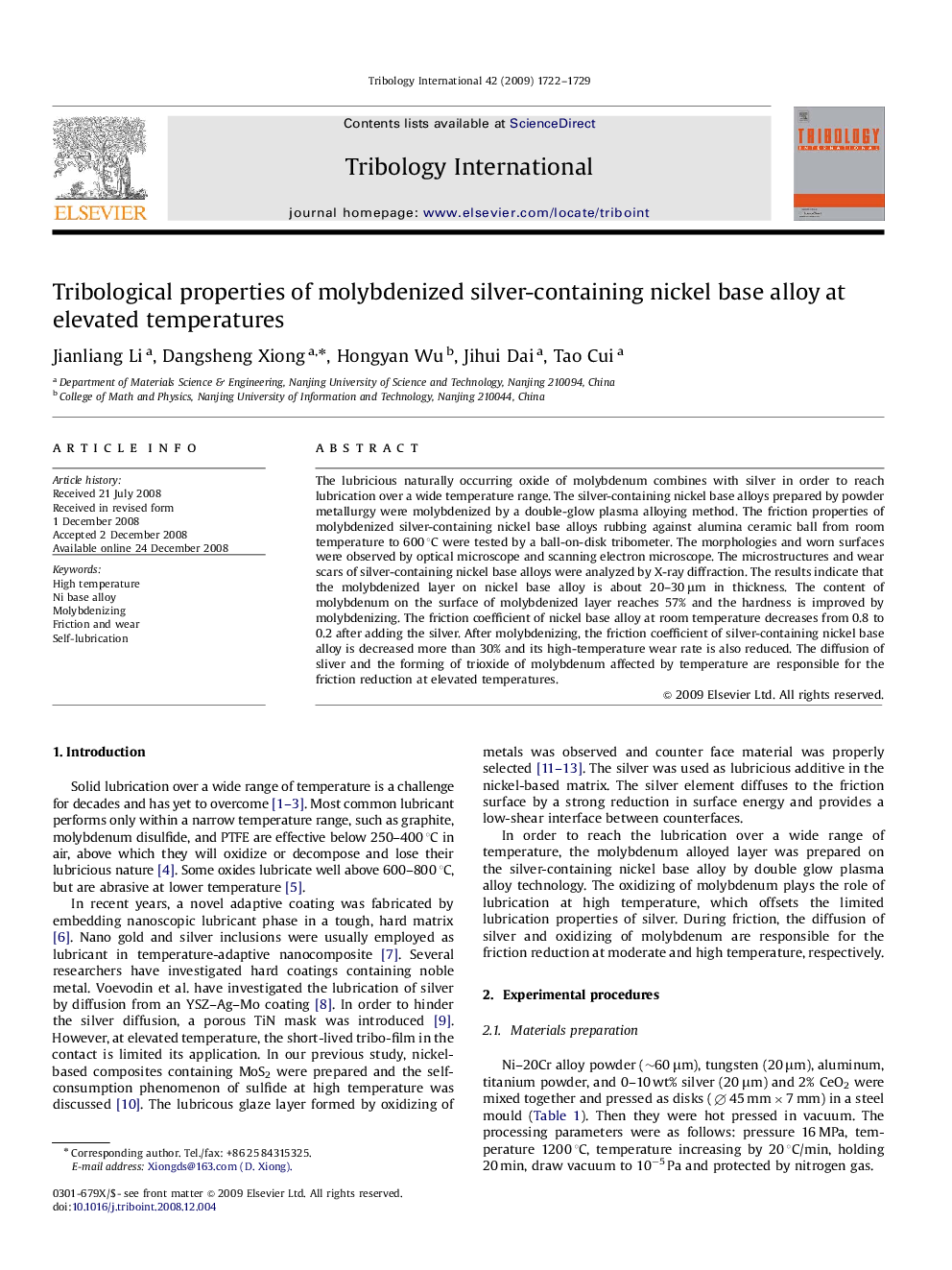| Article ID | Journal | Published Year | Pages | File Type |
|---|---|---|---|---|
| 616074 | Tribology International | 2009 | 8 Pages |
Abstract
The lubricious naturally occurring oxide of molybdenum combines with silver in order to reach lubrication over a wide temperature range. The silver-containing nickel base alloys prepared by powder metallurgy were molybdenized by a double-glow plasma alloying method. The friction properties of molybdenized silver-containing nickel base alloys rubbing against alumina ceramic ball from room temperature to 600 °C were tested by a ball-on-disk tribometer. The morphologies and worn surfaces were observed by optical microscope and scanning electron microscope. The microstructures and wear scars of silver-containing nickel base alloys were analyzed by X-ray diffraction. The results indicate that the molybdenized layer on nickel base alloy is about 20-30 μm in thickness. The content of molybdenum on the surface of molybdenized layer reaches 57% and the hardness is improved by molybdenizing. The friction coefficient of nickel base alloy at room temperature decreases from 0.8 to 0.2 after adding the silver. After molybdenizing, the friction coefficient of silver-containing nickel base alloy is decreased more than 30% and its high-temperature wear rate is also reduced. The diffusion of sliver and the forming of trioxide of molybdenum affected by temperature are responsible for the friction reduction at elevated temperatures.
Related Topics
Physical Sciences and Engineering
Chemical Engineering
Colloid and Surface Chemistry
Authors
Jianliang Li, Dangsheng Xiong, Hongyan Wu, Jihui Dai, Tao Cui,
